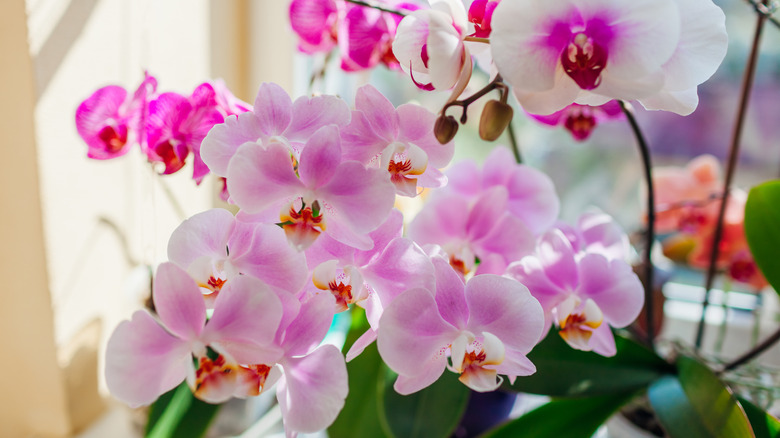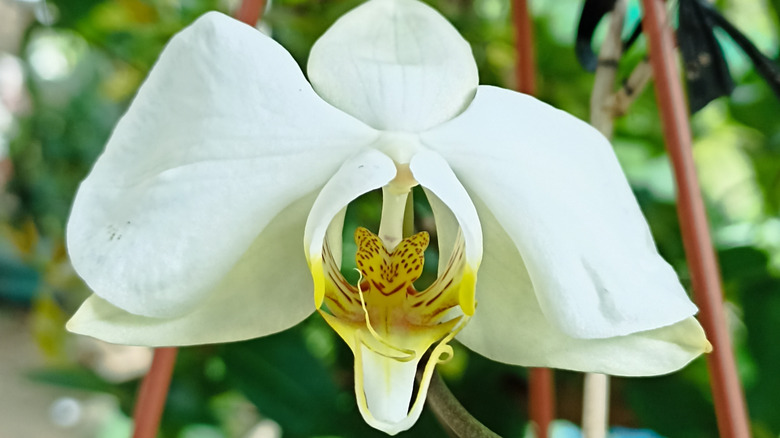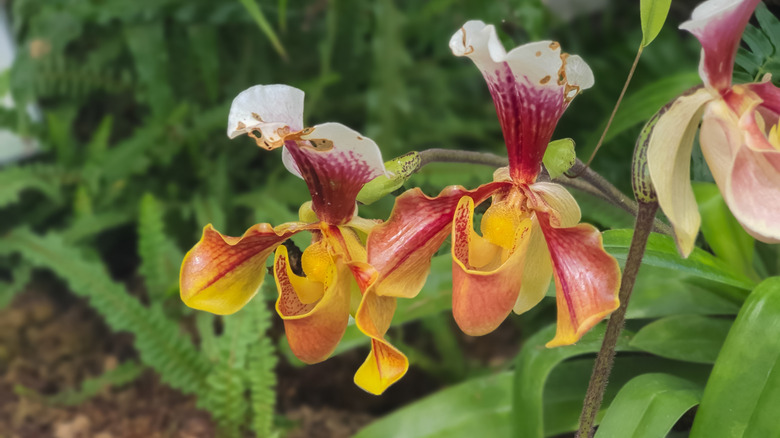Beginner Tips For Choosing The Right Type Of Orchid To Grow And Care For
We may receive a commission on purchases made from links.
The Orchidaceae, or orchid family of plants is beloved for its wide variety of stunning, colorful flowers. Orchids are considered to be somewhat challenging to care for because they are not as adaptable as other plants, and need to be kept in pretty precise conditions in order to thrive. There are also many common mistakes that are sure to kill orchids. Fortunately for those of us without green thumbs, not every type of orchid is so stubborn, so it is possible to grow one successfully if you choose the right flower for your environment. If you're a beginner who wants to start growing orchids, your first step should be to take notes of your home's environmental factors. Then, use that information to pick the right orchid, and make sure you choose the best option available at your local plant nursery.
Before you go orchid shopping, you need to know the temperature of your house, as well as what rooms get the most light. Using a tool like this laser thermometer gun from Amazon, gather the temperatures of the spots in your house that could hold an orchid, like window sills. During this inspection, you should think about how much vertical space you'll have to accommodate a growing orchid, as well as whether your windows face south or east. In general, windows that face the former direction receive a lot of sun, while east-facing windows get more shade.
Pick an orchid based on your home's conditions
Once you've gathered all the necessary stats about your abode, you'll be able to make an informed choice on the best orchid for your space. You might even be surprised to learn that the perfect room to grow orchids is not where you think. Some orchid species are better suited for beginners, like the moth orchid, or Phalaenopsis. However, even the most forgiving orchid will only flourish in the correct environment, which greatly depends on light and temperature, and differs between varieties.
For instance, both moth orchids and Ascocentrum orchids do well in high temperatures above 60 degrees Fahrenheit, but Ascocentrum orchids like as much direct sun as they can get during the day. Moth orchids, on the other hand, prefer being in a shadier spot. Additionally, some orchids grow much taller than others, so keep the future in mind as you pursue plants.
It would be impossible to list the ideal conditions for the hundreds and hundreds of different types of orchids, but taking time to do research before you hit the plant store can give you some solid direction. Another beginner-friendly orchid to look out for is called the lady slipper orchid (Phragmipedium). These striking blooms like shade and can grow in colder spaces between 50 and 60 degrees Fahrenheit.
How to pick the best available orchid
Even after narrowing it down to a couple different species, your orchid search isn't over yet. The final step (before learning how to successfully care for your indoor orchid, of course) is to identify the healthiest, best orchid available at the garden shop or plant nursery. To do this, first stop to smell the flowers; a bad odor is usually a sign of a rotten or diseased flower. After securing a scentless orchid, carefully check its roots. If they are brown, discolored, or disintegrating, move on to a different plant. The orchid's leaves and stem should also be green and firm to the touch, but not dry or cracking.
Finally, take a good look at the orchid's flowers to make sure they aren't wilting or otherwise damaged, and closely inspect the stems to see if there are any new blooms waiting to blossom. If you're willing to wait a week or so, you may even want to pick up an orchid that hasn't started flowering yet. This way, you'll get to enjoy the full cycle of an orchid in your own home.


